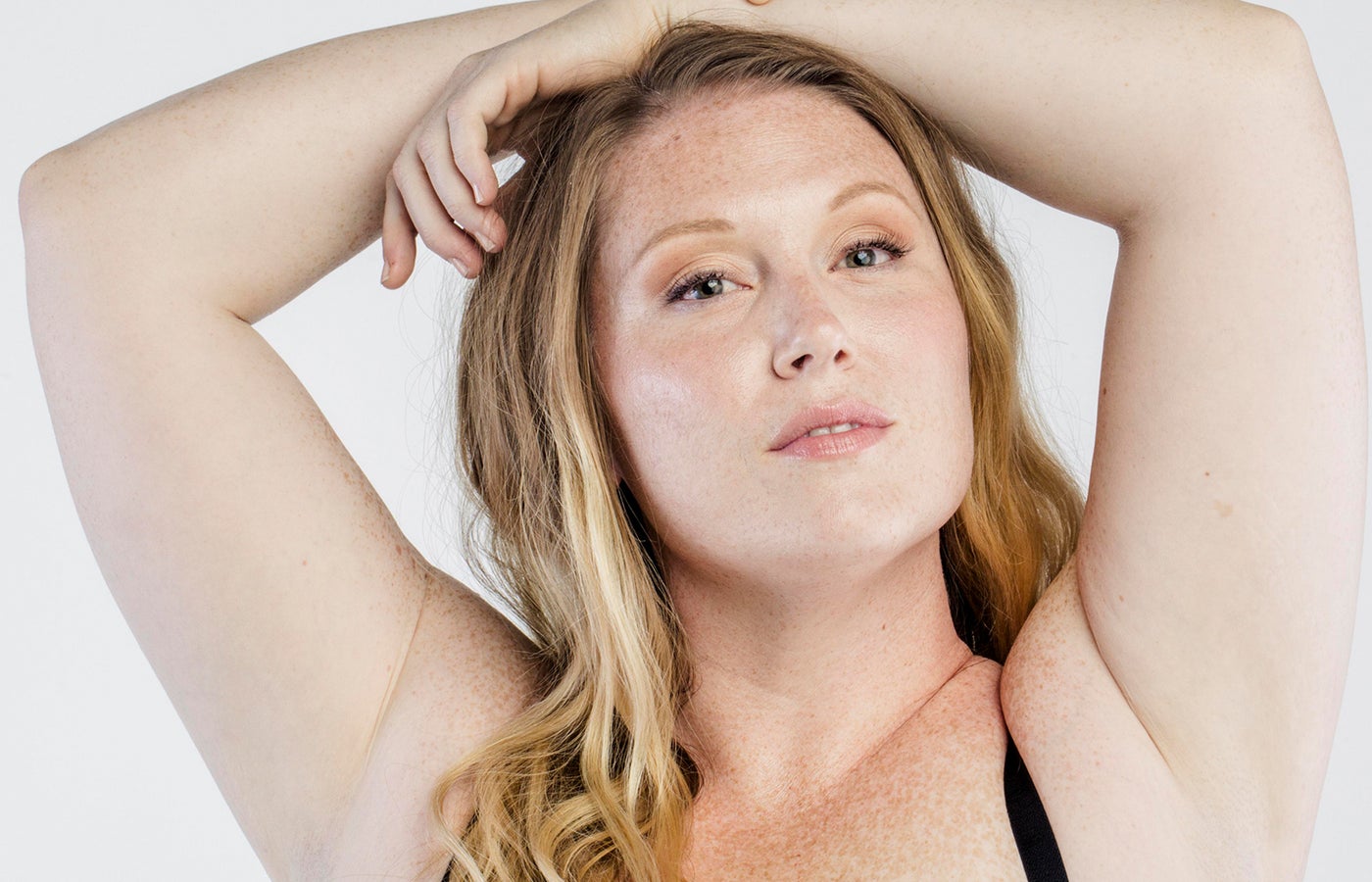A facelift (rhytidectomy) is a surgical procedure that can create transformative facial rejuvenation results. “A facelift is the singular cornerstone for facial rejuvenation,” according to Dr. Stephen Prendiville, a board-certified facial plastic surgeon in Fort Myers, Florida.
There is no more effective way to address signs of aging, including sagging or loose skin, deep wrinkles, and facial folds, and results can last a decade or more.
Modern facelift procedures involve lifting soft tissue, repositioning and tightening the underlying muscle layer, removing fat deposits in the neck, and tailoring and re-draping the remaining skin, to give the face and neck a more youthful appearance.
Despite a hefty price tag, up to two weeks or more of downtime, and a growing roster of nonsurgical treatments claiming to offer similar benefits, facelift surgery remains one of the most popular plastic surgery procedures.
Pros
- Facelifts have high patient satisfaction. The procedure has a 92% Worth It Rating on RealSelf, meaning that a majority of the thousands of reviewers thought their results lived up to their expectations.
- Facelift before and after photos show patients with a significantly improved facial appearance.
- Modern surgical methods lift the underlying facial muscles as well as the skin, so more facelift results today look very natural.
- When the procedure is performed by an experienced surgeon with a reliable technique, scars are generally undetectable once fully healed.
- Results typically last a decade or more.
Cons
- Facelift surgery doesn’t include any work to the eyelids or brow. “Brow lifts and upper and lower eyelid surgery [or blepharoplasty] are separate cosmetic surgery procedures one can tack on, for an additional cost,” says Dr. Prendiville.
- The procedure doesn’t address fine lines, crepey skin, volume loss, hyperpigmentation, or other signs of aging related to sun damage or poor elasticity, notes Dr. William Portuese, a board-certified facial plastic surgeon based in Seattle. You’ll need additional skin rejuvenation treatments, like laser resurfacing, chemical peels, and dermal fillers or fat grafting, to correct those concerns.
- Complications can include bleeding, infection, poor wound healing, visible surgical scars, hematoma, and facial nerve injury with associated muscle weakness or paralysis, according to Dr. Brock Ridenour, a board-certified facial plastic surgeon in St. Louis, Missouri.
- Asymmetries, deformities, and underwhelming or otherwise dissatisfactory outcomes are possible.
- Recovery requires at least two weeks of downtime.
- Facelifts are expensive and not covered by insurance.
- Average Cost:
- $19,123
- Range:
- $5,600 - $50,000
The cost of a facelift can vary widely, depending on the extent of the procedure as well as your surgeon’s level of training, experience, practice location, and the specifics of your surgery.
While RealSelf members have reported facelift costs as high as $30,000, some Instagram-famous surgeons in NYC and LA reportedly charge in the six figures for their facelifts.
Related: Facelift Costs: What Exactly Are You Paying For?
This elective cosmetic procedure is not covered by insurance, but most surgeons accept third-party financing options like CareCredit.
As you're choosing a facial plastic surgeon, look for facelift pictures that show carefully hidden, thin scars, natural-looking ears and sideburns, cheeks that appear lifted without being pulled, facial symmetry, a crisp jawline, and a smooth transition to the neck.
The photos themselves should be standardized—showcasing consistent lighting, backgrounds, angles, and facial expressions—with the afters taken weeks to months post-op, once swelling has gone down.
Most importantly, the patient should appear younger while still looking like themselves.
Every face evolves at a different rate. While the optimal age range for facelift surgery is 40s to 60s, if you’re healthy and have obvious laxity, it's possible to have the procedure in your 30s or into your 80s.
“The ideal patient should have visible signs of aging—descent of the cheeks, jowls and marionette lines, face and neck laxity, and banding in the neck—and the desire to do something about it,” Dr. Prendiville says.
Facelift candidates are nonsmokers in good physical and mental health, with reasonable expectations and no serious underlying medical conditions. Your surgeon will ask about your medical history during a consultation.
There are two main techniques for full facelift surgery: a SMAS lift and a deep plane facelift.
Both methods reposition the deep tissues of the face, primarily the SMAS (superficial musculoaponeurotic system), which is a sheet of firm facial tissue (fascia) covering the muscles of expression in the lower face. The platysma muscle of the neck is an extension of the SMAS; it too is resuspended during most facelifts.
While facelifts of old stretched and resized the skin only (often giving a windswept look), modern procedures, both SMAS and deep plane, address both the skin and the SMAS.
While plastic surgeons have long argued about which facelift technique delivers the most long-lasting and natural-looking result, no one style has been proven superior in a peer-reviewed study. What’s most important is finding a qualified, experienced surgeon with the skill to customize their approach for each patient's specific anatomy and aesthetic goals.
The type of facelift your surgeon performs will come down to the technique they’re trained in and feel most confident performing as well as your needs, anatomy (your skin thickness, the fullness of your face, the angles of your neck, your bone structure), and your desired results.
Regardless of which approach your surgeon favors:
- A facelift generally takes about 4 to 6 hours, depending on the complexity of the operation.
- This outpatient procedure can be performed under either general anesthesia or local anesthesia with IV sedation.
- Once you’re unconscious or sedated, your face will be injected with a mix of lidocaine, epinephrine, and tranexamic acid, to numb the area and minimize bruising.
- After surgery, you’ll be discharged with either bandages on your face and head or a drainage tube. You’ll be groggy, so make sure you have a trusted friend, partner, or family member take you home and stick around for the first night, to monitor how you’re feeling.
The SMAS facelift
All SMAS facelifts involve lifting up the skin and manipulating the SMAS to restore the contours of the face. During the procedure:
- Discreet incisions are made either inside the ear (tragal incision) or in front of the ear (pre-tragal incision), following the natural crease of your earlobe. A traditional facelift incision typically starts in the temporal hairline and, after traversing the ear, ends in the lower scalp behind the ears.
- The skin is raised off the SMAS, which is repositioned and tailored (sometimes folded, other times trimmed).
- Typically, the platysma is accessed and lifted via ear incisions. The central portion of the neck may also be addressed through a small incision under the chin, in what’s known as a platysmaplasty. “Fat deposits are removed from the neck as well,” says Dr. Portuese.
- During a deep neck lift, surgeons go underneath the platysma to reduce subplatysmal fat, submandibular glands, and digastric muscles, all of which can contribute to fullness under the chin and in the lateral neck.
- The skin is redraped and any excess skin is removed around the ears.
- The facelift incisions are closed with tiny stitches.
Under the SMAS umbrella, there are various kinds of facelift techniques, two of the more popular being the SMAS imbrication and the SMASectomy. Surgeons commonly put their own spin on these textbook procedures, extending the degree of dissection, mobilizing the SMAS to a lesser or greater extent, or adjusting the direction of lift (aka the vector).
Learn more about SMAS facelifts
The deep plane facelift
With a deep plane facelift:
- The surgeon creates a flap that includes skin, subcutaneous fat, and SMAS. The flap is lifted and repositioned as one composite unit.
- Often, the surgeon releases certain retaining ligaments in the face, to better mobilize and elevate the cheeks and jowls, which is why the deep plane approach is thought to give a better mid-facelift in addition to smoothing nasolabial folds more effectively.
- The muscular structure of the neck is also lifted and supported with tension-bearing sutures. The deeper fat, glands, and digastrics are sculpted when necessary.
- As with a SMAS facelift, the skin is redraped and trimmed before incisions are closed.
Proponents of the deep plane technique say the results are more natural-looking and longer-lasting, but certain studies have found no major differences between the two techniques in patients under 70 years old, even when comparing the results over a 10-year period.
When someone has thick facial skin and a very full face, a deep plane lift may provide better support. In the spirit of customizing the procedure to the patient, “many surgeons will vary their facelift technique depending on anatomic considerations, such as the width and shape of the face, the patient’s skin thickness, and the distribution of subcutaneous fat,” says Dr. Ridenour.
Learn more about deep plane facelifts
The endoscopic facelift
True endoscopic facelifts rely on tiny incisions hidden in the hair of the temples, through which surgeons insert a lighted camera that helps guide their dissection. This eliminates the need for long incisions around the ears, which are standard with open-style facelifts.
In the past, endoscopic facelifts were "subperiosteal," meaning surgeons worked directly above bone, treating the upper two-thirds of the face (essentially taking an endoscopic brow lift one step further to include the midface).
The most modern iteration of the so-called "scarless facelift" is a deep plane endoscopic facelift. It generally addresses the mid- and lower face through incisions in the hair and also, in some instances, behind the ears.
These procedures frequently include neck work, as well, via an incision under the chin.
“The most common elements [of an endoscopic facelift] are the elevation of the midface, cheek structures, and jowls using small incisions,” says San Francisco plastic surgeon Dr. Carolyn Chang.
Since classic endoscopic incisions allow for little to no skin removal, they’re most appropriate for young patients with early signs of aging or older patients with exceptional skin elasticity.
The popular “ponytail facelift” is a trademarked term for a specific type of endoscopic deep plane facelift developed by Dr. Chai Chi Kao, a plastic surgeon in Santa Monica, California. Despite the branding, providers commonly adopt the moniker for other kinds of limited or endoscopic lifts, but a true ponytail procedure follows a specific protocol and addresses the full face and neck, mainly through keyhole incisions.
The mini facelift
A short-scar or mini facelift involves making a limited incision, primarily in front of the ear and into temporal hair tuft, explains Dr. Ridenour. “The short-scar facelift is typically done in younger patients who have modest sagging of skin,” he says.
One type of mini lift is a lower facelift, which focuses primarily on the jawline and neck, explains Dr. Ridenour. “A lower facelift may tighten only the platysma, or neck muscles, rather than the entire SMAS layer, and can be good for younger patients with early aging of the lower face.”
While mini lifts vary in scope and intent, outcomes tend to be less dramatic and less durable than those of traditional facelifts.
Related: What Kind of Facelift is Right For You? Doctors Explain the Differences
Most full facelifts do include a neck lift. The surgeon elevates the skin off the neck’s platysma muscle (an extension of the facial SMAS layer) and tightens that muscle.
The platysma can usually be accessed through the same facelift incision sites around the ears, but sometimes an incision under the chin is necessary—especially in the case of severe platysmal banding (when the muscle is seen as two vertical bands that run the length of the neck, from jawline to collarbone).
Platysmal banding can be corrected by cutting and suturing the muscle through a small incision under the chin.
Through this same incision, any excess fat above the platysma muscle can be removed with liposuction. The deep fat underneath the platysma must be surgically removed. Some surgeons reduce nearby salivary glands and digastric muscles while they’re in the subplatysmal space to more dramatically improve the neckline.
Related: Lower Facelift vs. Neck Lift: What’s the Difference?
You’ll be through the worst of facelift recovery after 7–10 days and looking pretty presentable 2 to 4 weeks post-op. It typically takes longer to recover from a deep plane facelift than a SMAS procedure, since the tissue dissection is more extensive with the deep plane technique.
The first week can be rough: you’ll be swollen, stiff, and sore, especially if you’ve tacked on additional procedures like laser resurfacing, rhinoplasty, facial fat grafting, and/or eyelid surgery, all of which can compound puffiness and discomfort.
You’ll be on a soft-food diet for the first few days, drinking only from glasses or cups (the sucking motion of straws can be painful). Stock up on smoothies, bland soups, and easy-to-chew foods that are high in protein.
You may want a firm cushion that can elevate your head while you rest, since regular pillows tend to put pressure on the ears. However, some surgeons recommend lying completely flat following a facelift to minimize swelling, so talk to your surgeon before investing in pillows.
Facelift recovery time depends a lot on how your body heals, but this is a typical day-by-day timeline.
Day 2:
- The day after surgery, you’ll have a follow-up appointment. Your surgeon will remove the surgical dressing and evaluate your facelift incisions as well as any bruising or swelling.
- You’ll be sent home in fresh bandages or no bandages at all, depending on how you’re healing.
- You can bathe the day after surgery, but may need to avoid getting your head wet.
Day 3–4:
- Bruising and swelling are at their max.
- Take your prescribed pain medication for the first few days of recovery, not aspirin or other over-the-counter painkillers.
Day 3–5:
- You’ll have another follow-up appointment within five days to check wound healing progress.
- Your surgeon will remove drains that had been placed to prevent fluid buildup and seroma formation. Remaining bandages will also come off. Your doctor may give you a removable elastic strap to wear for support.
- You’ll care for your facelift incisions by cleaning them with saline and applying a thick ointment, such as Vaseline.
- You can wash your hair with warm water and baby shampoo. Gently let the water run through your hair, to remove any dried blood, surgical soap, and residue; don’t disturb the staples or sutures. Avoid letting shower water hit your face. Pat your face dry and let your hair air-dry.
- Skip makeup and skin care until your surgeon gives you the green light.
- As you begin to heal, you may feel itchiness, swelling, and tightness. This should subside within a few weeks.
Day 7:
- Stitches and sutures are removed.
- You’ll be allowed to do light housework or other activities, if you feel well enough.
- Some patients choose to return to work at this time, but many wait for most of the swelling to go down (around the two-week mark).
- Don’t bend over; lift anything heavy; or bump your head, face, or neck—this can cause bleeding.
Day 14:
- You should look “restaurant ready.”
- You’ll also be able to resume sleeping on your side, but don’t sleep on your stomach until your doctor says it’s safe to do so.
Day 30:
- You should be back to your regular exercise routine.
Month 3–4:
- During the first three to four months post-op, stay out of the sun and apply sunscreen with a high SPF.
- You may notice minor swelling, bruising, tightness, and even numbness, but it’s rarely noticed by others.
RealSelf Tip: Dr. Prendiville tells his patients to eat well so they can heal well. That means a diet high in protein and also avoiding fish oil, alcohol, ginkgo biloba, vitamin E, and other blood thinners (which can prolong bruising).
You'll be under anesthesia during the surgery itself, so you won't feel any discomfort.
Once it wears off, stay ahead of pain for the first two to four days with prescribed medication.
You can expect to feel swollen, bruised, and tender for the first two weeks of recovery, with the worst swelling between 48 and 72 hours after surgery, says Dr. Prendiville.
Avoid bending over or doing any heavy lifting for two weeks, to help prevent excessive swelling.
You can use cold compresses (crushed ice in a bag, a soft ice pack, or even a frozen washcloth) to help reduce swelling and bruising, and ease the discomfort. Gently apply the compress to your face, 20 minutes on, 20 minutes off, during the first 48 hours.
Facelift surgery has a complication rate of 1.8%, according to a 2015 study (the most comprehensive and widely cited data). There is a lack of data on general facelift complications, because as the authors note, “A plethora of accepted techniques exist for facelift surgery, as well as significant individual surgeon variation.”
- This analysis doesn’t focus on any one specific style of facelift or the outcomes of one particular surgeon; it looks at 11,300 facelifts performed between 2008 and 2013, and the complications that arose in this group of patients.
- The most common potential complication noted in this study was hematoma (1.1%), a collection of blood under the skin. “It usually stems from too much activity while healing or elevated blood pressure,” says Dr. Prendiville. If you develop a hematoma, your doctor will need to drain the blood via a syringe.
- The second most common complication was infection (0.3%), a risk you can mitigate by keeping your incisions clean.
- Mild bleeding isn’t unusual after any surgical procedure, especially if you cough, sneeze, or strain yourself in any way. If you’re bleeding badly, contact your surgeon immediately.
Facial nerve injury is possible, but the chance is extremely low. When it does occur, it’s typically not permanent. “Facial nerve palsy and facial muscle weakness following a facelift are almost always temporary, with full recovery by three to six months [afterward],” says Tampa, Florida, plastic surgeon Dr. Jaime Perez. (Every facelift surgeon has their own personal rate of temporary and permanent nerve injury. Ask your surgeon about their rate during your consultation.)
A 2019 analysis of complication rates between different types of facelifts found “that all rhytidectomy approaches have a comparable and safe complication profile.” The authors conclude that “the choice of rhytidectomy technique should primarily be made on the basis of the quality of the result rather than the presumed complication rate.”
Rhytidectomy patients should have a more lifted, youthful appearance for 10 years or more.
While you're effectively turning back the clock, the natural aging process will still continue and signs of aging will continue to accrue.
Consistent skin care—a gentle cleanser and moisturizer, a vitamin C serum, a nightly retinoid, and daily sunscreen—can help extend your results by safeguarding skin health and elasticity.
These less invasive alternatives to a facelift can’t deliver results on par with a surgical lift, but they may be good options for those who aren’t ready for surgery.
- Other nonsurgical options include radiofrequency (RF) or ultrasound therapy treatments, such as FaceTite or Thermage FLX. They use heat to stimulate collagen production and improve elasticity to firm and thicken the skin, thereby improving signs of aging in certain areas of the face. They do not actually lift the skin. “These give you a fraction of the results that a facelift will give you,” says Dr. Prendiville. They may also complicate a future surgery.
- Injectable fillers can temporarily add volume to the skin for a smoother, more rejuvenated appearance. Also known as a liquid facelift, they use hyaluronic acid fillers, such as Restylane or Juvéderm, in combination with neurotoxins, like Botox or Dysport, which relax expression lines. Despite what you may have heard, fillers fill — they do not lift.
- A Vampire Facelift uses injections of platelet-rich plasma (PRP) taken from your own blood and combines them with hyaluronic acid–based fillers. The effects can last up to a year, depending on the type of filler that’s used.
- A thread lift is not surgery, but barbed threads are passed under the surface of your skin to temporarily reposition soft tissues. As they’re absorbed by your body over six months, the threads boost collagen production, which can increase firmness for about a year.
At a facial rejuvenation consultation with a facial plastic surgeon, your provider can discuss both surgical and nonsurgical options.







